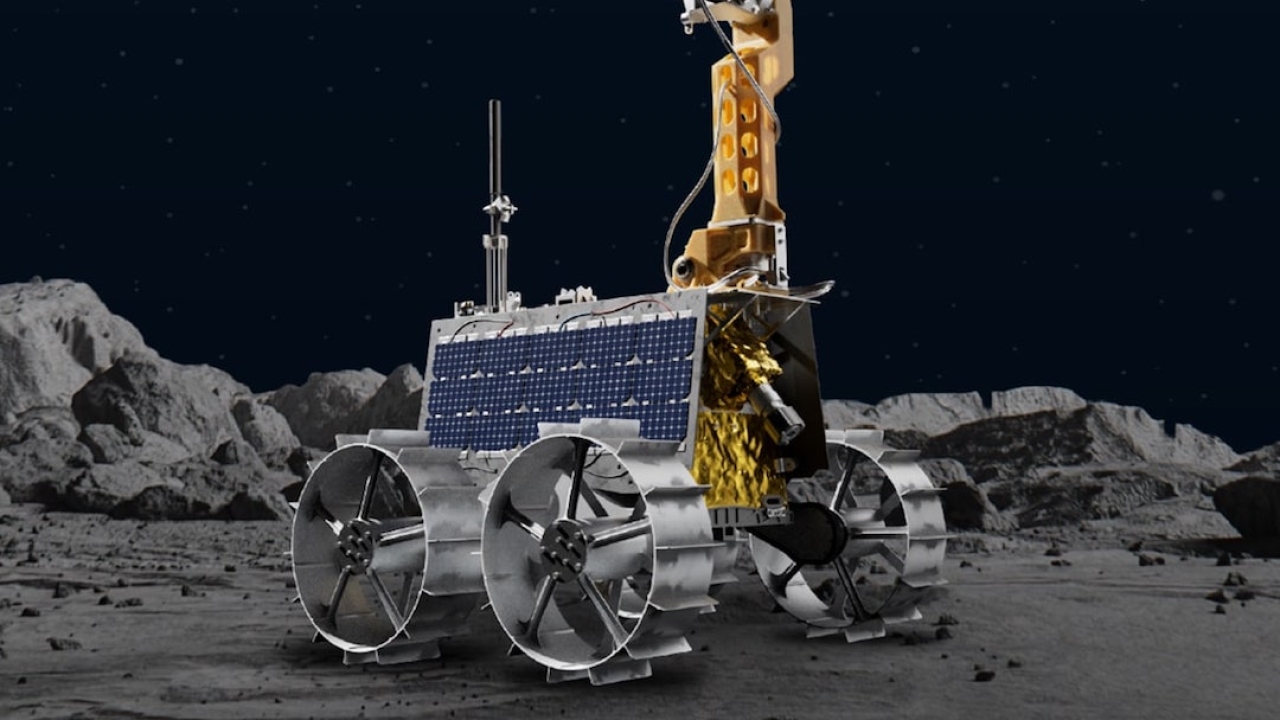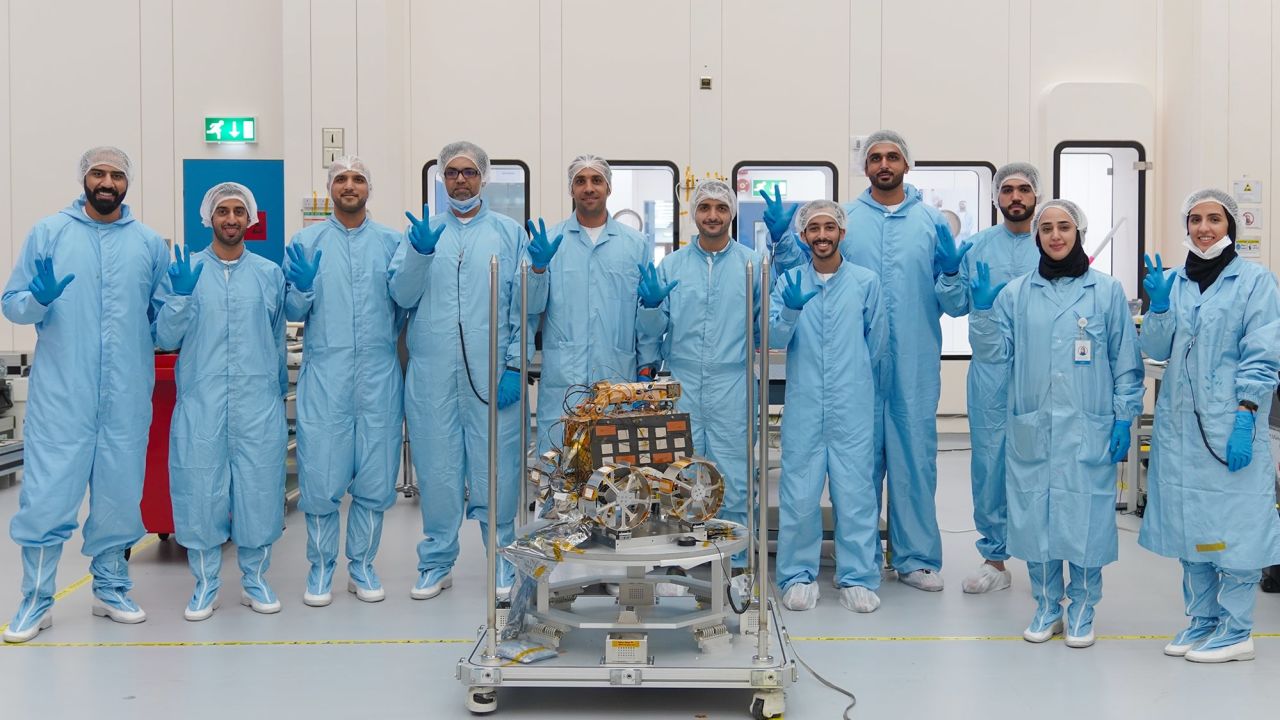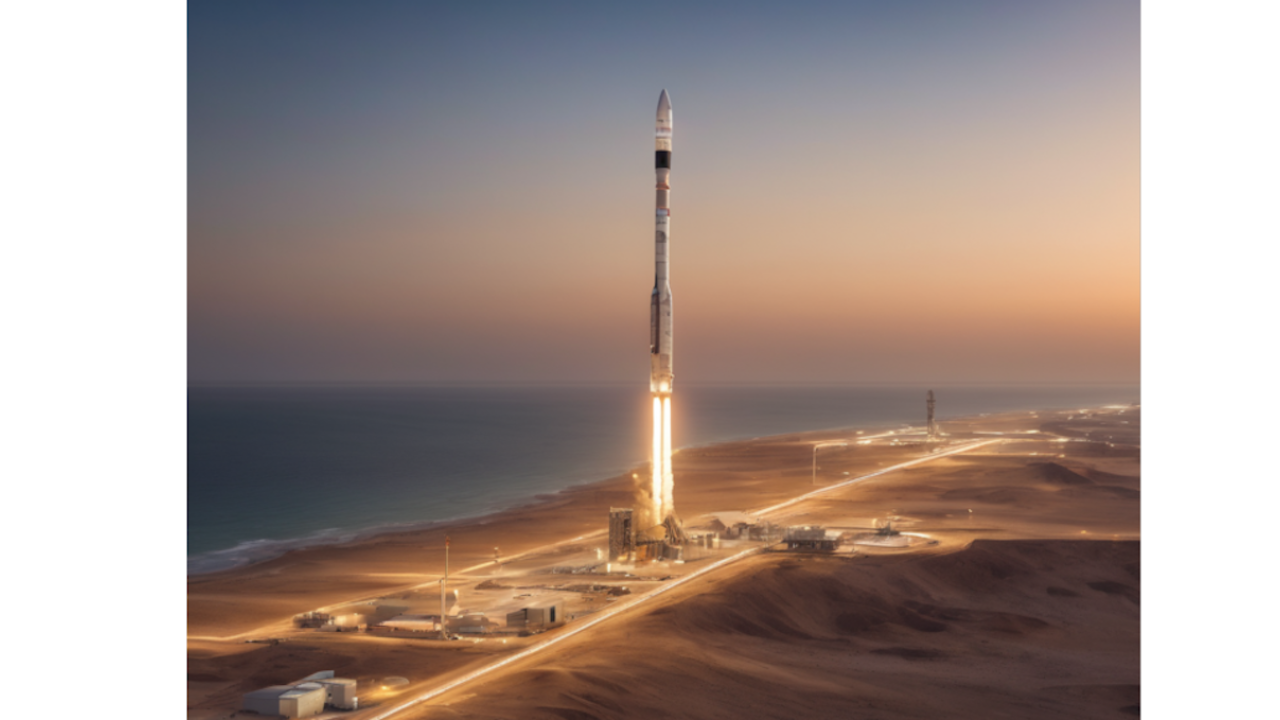UAE ramps up space programme with mission launch
The United Arab Emirates has taken the next step in its space programme with the launch of its Rashid Rover aboard a Space X Falcon 9 rocket.

Capable: The tiny rover has a maximum speed of 10cm/s, can cope with obstacles up to 10cm high, and slopes of up to 20 degrees. Picture: MBRSC.
The UAE-built rover, the first Emirati mission to the surface of the Moon, lifted off from Cape Canaveral Space Force Station in Florida, USA, on December 11 aboard the Japanese lunar lander Hakuto-R, and is now making its five-month journey.
SpaceX’s reusable Falcon 9 booster landed safely back on the company’s drone ship after delivering the lander to space.
If successful, the UAE will become the first Arab country and the fourth country in the world to land on the lunar surface after the United States, the Soviet Union, and China.
The Mohammed Bin Rashid Space Centre (MBRSC) confirmed that the spacecraft will now take a low-energy 384,400km route to the Moon, rather than a direct approach, with the landing scheduled to take place in April.
His Highness Sheikh Mohammed bin Rashid Al Maktoum, vice president, prime minister and ruler of Dubai, said that the UAE’s space ambitions continue to be realised by “achieving high levels of accomplishment and empowering space cadres to develop the national space sector and consolidate the country’s advanced position in space”.
While witnessing the launch from the MBRSC’s mission control centre, Sheikh Mohammed said: “The Rashid Rover is part of the UAE’s ambitious space programme, which began with Mars, progressed to the Moon, and soon to Venus. Our goal is to increase our knowledge, enhance our capabilities, and leave a scientific legacy in the history of space and humanity.
“Reaching the Moon is a milestone in our ambitious march to progress for our nation and its people, who know no limits. And our next step is bigger and higher.”
The Emirates lunar mission is part of the new 2021-2031 strategy launched by the MBRSC, which includes the development and launch of Rashid, the first Emirati lunar rover named after the late Sheikh Rashid bin Saeed Al Maktoum, builder of modern Dubai.
Being referred to as one of the world’s most compact rovers, the 70cm x 50cm x 50cm Rashid Rover was designed and developed by Emirati engineers from the MBRSC team. It aims to pave the way for humanity to make even more qualitative advances in science, technology, communication, and robotics, while enabling us to prepare for future missions to the Moon and beyond.
If the landing is successful, Hakuto-R will also become the first commercial spacecraft ever to make a controlled landing on the Moon.
Scheduled to touch down in the Atlas crater on the northeast part of the Moon, the rover has been designed to withstand the lunar night, when temperatures can reach as low as -183°C, or -297.4°F.

The tiny rover has a maximum speed of 10cm/s, can cope with obstacles up to 10cm high, and slopes of up to 20 degrees.
But, before the rover can explore the Moon, it has to land successfully, with more than one-third of lunar landing missions failing.
Only the US, the former Soviet Union and China have achieved a soft landing on the Moon. Recently, India and Israel have had crash landings.
If successful, the rover will spend one lunar day (equivalent to 14.75 days on Earth) on the surface, conducting its main operations. It will spend a second lunar day conducting secondary operations, to check whether the rover will survive the Moon’s tough night-time environment, before decommissioning.
It has 3D cameras, an advanced motion system, sensors, and a communication system that is powered by solar panels. There are four cameras, including two main cameras, a microscope camera, and a thermal imaging camera. Its sensors will analyse the properties of lunar soil, dust, radioactivity, and electrical activities, as well as the rocks on the Moon’s surface.
The rover will also analyse the plasma on the lunar surface and conduct experiments to understand more about lunar dust. MBRSC says razor-sharp lunar dust particles can stick to and erode spacesuits and equipment, causing operational problems for astronauts.
The UAE has plans to send several vehicles, including rovers and orbiters, to the Moon, with a second rover planned to launch in 2025. And its ambitions go much further, with plans to build the first human settlement on Mars by 2117.
Stay up to date
Subscribe to the free Times Aerospace newsletter and receive the latest content every week. We'll never share your email address.


